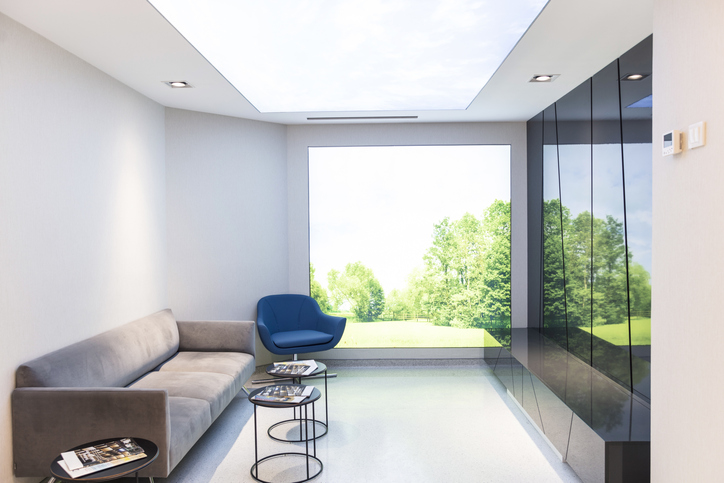The ideal shape of the nose is an important factor for all of us in our pursuit of beauty. Nose reduction surgery is an effective way to make this wish come true, but many people are concerned about the possibility of "reverting" after the surgery. Here, we will explain in detail the basics of nose reduction surgery, how to prevent reoccurrence, and what to do if it does occur.

Graduated from the Faculty of Medicine, National Kumamoto University. After serving as the director of major beauty clinics in Japan, etc., he opened Aladdin Aesthetic Clinic in 2023. He is a professional in aesthetic medicine with a doctorate in anti-aging research and many years of experience. With the motto of "Toward the realization of cosmetic medicine without lies," he aims to be the "Only One" together with his patients.
What is nose reduction surgery?

Nose reduction surgery is a cosmetic procedure to balance the face and achieve an ideal nose shape. This surgery plays an important role in achieving the natural beauty that many people seek.
There are several surgical procedures.
Nose reduction surgery is a cosmetic procedure that plays an important role in improving the aesthetic balance of the nose and changing the patient's facial appearance. There are three main methods of this surgery, each with its own unique characteristics and advantages.
| surgical procedure | Methodology Overview |
|---|---|
| external method | Incisions are made in the outer part of the nose to remove excess tissue and reduce the width of the nose. |
| inside measure | An incision is made inside the nose and the nose is adjusted from an inconspicuous location. |
| Other incisions | Suitable for more complex cases and can significantly change the shape of the nose. |
The lateral technique reduces the width of the nose by making minute incisions at the outer base of the nose and removing excess tissue. This technique is particularly suited for patients who feel that their noses are too wide. The procedure is performed under local anesthesia, and excess tissue is removed through an incision in the skin near the pterygoid cartilage of the nose. The amount of tissue removed is carefully determined according to the patient's facial balance.
Recovery after surgery is relatively quick, with a few days of swelling and mild discomfort in some cases, but in most cases the patient can return to daily activities immediately. The result is a natural, balanced nasal shape.
The medial method adjusts the nose by making small incisions inside the nose, especially in the nasal cavity. This method minimizes surgical scars. Fine adjustments are made to the cartilage and tissue inside the nose to improve the shape of the nose. This procedure produces few significant changes in the appearance of the nose and is suitable for patients seeking a more natural result.
The medial method often results in faster recovery and less visible surgical scars than the lateral method. As a result, subtle changes that look more natural are achieved.
Other incisions are applied in more complex cases or when the shape of the nose needs to be significantly altered. It is possible to adjust the overall shape of the nose, not just the nose. This procedure involves a more extensive incision than is commonly performed, and the size and shape of the nose is adjusted in detail. In some cases, reconstruction of the nasal apex may also be included.
Because of the customizability of the procedure, recovery time may be longer than with other methods, but it may be an effective option for patients who desire more pronounced changes. After surgery, the overall balance of the face can be greatly improved.
Purpose and Effects of Nose Reduction
The main goal of nose reduction surgery is to improve the overall balance and harmony of the nose. This surgery can make a big difference, especially for those who feel that their noses are either too wide or too large. After surgery, the nose is more refined and the entire face is more balanced. The result is a more confident social life.
Purpose and Effects of Nose Reduction
Nose reduction surgery plays an important role in enhancing the aesthetics of the nose and improving patient confidence. This surgery changes the appearance of the nose, the center of the face, and can significantly affect the overall impression of the face. If you feel that your nose is widened or unbalanced, nose reduction surgery is an effective way to restore facial harmony.
Satisfaction with the shape of the nose is an important component of a confident social life. Nose reduction surgery can help patients feel more positive about their appearance. A change in the appearance of the nose can also change the way others perceive it. A more shaped nose can lead to a more confident demeanor and improved interactions with others.
What is "retroversion" of nose reduction?

Retroversion, which occurs after nose reduction surgery, is a phenomenon in which the results achieved by the surgery are lost over time and the nose returns to its original shape. This "regression" is a concern for many patients and is a critical factor in the long-term success of the surgery.
Why does "backtracking" occur in the first place?
Retroversion refers to the phenomenon in which a satisfactory result is achieved immediately after surgery, but the effect diminishes over time and the shape of the nose approaches its preoperative state.
This phenomenon occurs because surgical removal and repositioning of tissue is affected by natural tissue growth and aging over time. It can also be affected by the surgical procedure and the characteristics of the patient's tissue.
| primary factor | Description. |
|---|---|
| surgical technique | Improper surgical technique is a major cause of "retroversion". Proper technique and accurate tissue removal and repositioning are necessary. |
| Individual differences in patients | Individual differences in patient skin thickness, elasticity, and tissue resilience affect "retroversion". Must be considered in surgical planning. |
| Postoperative Care | Inadequate postoperative care can cause "backsliding". Proper care aids the recovery process and maintains results. |
The main causes and mechanisms of "retroversion" include inadequate surgical technique, improper aftercare, and physiological characteristics of the patient (e.g., skin thickness and elasticity).
After surgery, the tissue adapts to its new position during the recovery process, and during this process there is a tendency for the tissue to try to return to its original position. This is due to the "memory" of the skin and cartilage and can be especially pronounced when major changes have been made.
Prevention methods and the importance of aftercare
Although not limited to nose reduction, it is important to develop an appropriate surgical plan that is tailored to the patient's characteristics and goals before surgery is performed. The most effective surgical approach is selected based on the patient's facial structure and skin characteristics.
In addition, surgery performed by an experienced physician or clinic increases surgical accuracy and reduces the risk of "backsliding. Postoperative care is also essential to properly manage the recovery process and maintain the desired outcome. Regular follow-up, care as directed by the physician, and adequate rest are all important.
What to do when "retroversion" of nose reduction occurs

The "backlash" after nose reduction surgery can cause disappointment for the patient. However, with proper coping strategies and an understanding of revision surgery options, it is possible to achieve the desired result again.
Effective coping strategies
First and foremost, if a "retroversion" occurs, a comprehensive checkup by the patient's physician and health care provider is necessary. This includes a comparison of pre- and post-operative photographs, a review of the patient's health and past medical history.
Therefore, accurately identifying the cause of "retroversion" is essential for proper treatment planning. This may identify problems with surgical technique, patient-specific tissue characteristics, inadequate postoperative care, etc.
For mild "retroversion," injections of hyaluronic acid or other fillers may be effective. These can help fine-tune the shape of the nose and restore the desired appearance.
In general, proper skin care is important to maintain healthy skin at the surgical site. Sun protection is also important, as sunburn accelerates skin aging and affects surgical results. In addition, adequate nutrition and a healthy lifestyle can aid in postoperative recovery and help maintain long-term results.
Re-operation options and considerations
Because "retroversion" that occurs after nose reduction surgery is a significant problem for patients, revision surgery may be a viable option for severe cases that do not resolve with nonsurgical treatment.
However, understanding the risks is an essential point. Reoperation involves unique risks, including infection, scarring, and risks associated with anesthesia. These risks depend on the overall health of the patient and the complexity of the surgery.
In addition, because the pre-operative consultation before revision surgery includes a thorough, detailed discussion of the goals, expected results, and risks of the procedure, patients will need to share their questions and concerns about the surgery with the physician to make an informed decision.
Preoperative Preparation
Your overall health is important before surgery. This includes managing stress and getting adequate sleep. Good sleep enhances the body's ability to recover and strengthens the immune system.
Excessive smoking and alcohol consumption may also delay postoperative recovery and increase the risk of bleeding, so it is advisable to refrain from alcohol consumption and smoking before surgery.
In addition, it may be necessary to temporarily stop the use of some medications prior to surgery. In particular, it is important to adjust the use of drugs that affect blood clotting (e.g., aspirin and certain anti-inflammatory drugs) according to the physician's instructions, as they increase the risk of bleeding.
Appropriate timing and age limits for nose reduction surgery

When planning for nose reduction surgery, it is essential to consider age, stage of growth, and life circumstances. Age and timing can greatly affect the safety and outcome of surgery.
Growth and age considerations
It is still recommended to wait until the facial skeleton has grown and stabilized before surgery. The general rule of thumb is after about age 16 for women and after about age 18 for men, but there are individual differences here. This is because surgery performed while the facial skeleton is still growing runs the risk of causing disproportionate facial features later in life.
However, the timing of surgery, adult or otherwise, depends primarily on personal health, psychological readiness, and social and professional factors, so it is advisable to first seek advice at a consultation when surgery is under consideration.
Relation between surgical effect and age
Hypothetically, younger patients tend to have more elastic skin and faster postoperative recovery. In younger patients, the effects of surgery may be long-lasting. On the other hand, in older patients, skin elasticity may decrease and the postoperative recovery process may be slower. It is also important to set realistic goals and expectations for the surgery, taking into account the natural changes in the face with aging.
When planning surgery, it is important to take into account the individual's lifestyle and important social events. Timing is critical to minimize the impact of the surgery and recovery period on daily life and occupation.
summary
Nose reduction surgery is an effective option for obtaining the ideal nose shape. As explained here, selection of the appropriate surgical procedure, adequate preoperative and postoperative care, and an understanding of the possible risks are essential to achieving the desired result. It is important to keep these points in mind to ensure the longevity of a beautiful nose.
At Aladdin Aesthetic Clinic, based on our many years of experience in cosmetic medicine and cosmetic dermatology and the knowledge of our doctoral degree, we provide counseling that aims to be "only one", offering the best treatment for each person we meet. We offer only the necessary treatments without any unnecessary information or suggestions.
Feel free to use our official LINE account for 24-hour counseling and reservations. Please feel free to contact us for free counseling for the first time or if you have any concerns.





